This article was co-authored by Laura Flinn. Laura Flinn is a National Academy of Sports Medicine (NASM) Certified Personal Trainer, USA Olympic Weightlifting Sports Performance Coach and Certified Fitness Nutritionist, with an additional qualification as a TRX Suspension Trainer. Laura runs her own personal training program based in the San Francisco Bay Area and specializes in topics such as weight loss, muscle growth, cardiovascular training, and strength training.
There are 21 references cited in this article, which can be found at the bottom of the page.
This article has been viewed 14,274 times.
Are you looking to bulk up and gain some muscle mass? Strength training exercises that work your total lower and upper body muscles are great for gaining overall mass instead of just adding extra fat. Be smart about how you exercise by sticking to a weekly schedule, challenging yourself, and mixing it up so you (and your muscles) don’t get bored. We've put together a guide to the top exercises for making gains and bulking up if you're underweight.
Steps
Building Lower Body Mass
-
1Do squats to add bulk to your quads, glutes, and hamstrings. To perform a squat, keep your back neutral (not arched), lift your chest, and pull your belly in toward your spine while you lower yourself down and back up. Keep your feet planted shoulder-width apart and think of the movement as if you’re taking a seat in a low chair just below your butt.[1]
- Start by doing 3 sets of 12 while holding 10 to 20 pound dumbbells.
- Your upper leg muscles are some of the biggest ones in your body, so working to add muscle to that region is a sure-fire way to gain weight and add muscle mass.
-
2Hold weights while you do lunges to work your thighs, hips, and glutes. Stand upright and hold a 10 pounds (4.5 kg) or 15 pounds (6.8 kg) dumbbell in each hand. Step your right leg forward about 2 feet away from your left foot, keeping your torso upright and inhaling as you lower yourself downward until your front thigh and calf are at a 90-degree angle. Then, use the heel of your left foot to push yourself back up to the starting position.[2]
- Do 3 sets of 10 to 15 reps on each side.
- Don’t let your knee move in front of your ankle when step forward and lower yourself down.
- Your back knee, hip, and shoulder should form a straight line.
- Pull in your abdominal muscles to help you maintain balance and work your core.
Advertisement -
3Perform deadlifts to build your upper leg muscles, core, and forearms. Start with the bar on the floor and your mid-foot directly under the bar. Bend down to grasp the bar with your hands shoulder-width apart while keeping your back neutral. Then, bend your knees until your shins touch the bar. Lift your chest up and straighten your lower back as you inhale and stand up with the bar.[3]
- Push your hips back and bend your knees to lower the bar back down.
- Don’t lock your knees when the bar is fully lifted.
- Avoid rounding or overarching your back at any time during the deadlift because it can put pressure on your spinal discs and lead to injury.
- If you’re a woman, start by deadlifting about 125% of your body weight (e.g., if you weigh 130 pounds (59 kg), start with 162 pounds (73 kg). If you’re a man, start with roughly 150% of your body weight (e.g., if you weigh 180 pounds (82 kg) start with 270 pounds (120 kg). Most bars weigh about 45 pounds (20 kg), so subtract that number from your deadlift weight and add bar weights accordingly.
-
4Use a leg press machine to engage your quads, hamstrings, and glutes. Sit on the bench of the machine with your back and head resting against the cushion. Place your feet on the footplate about hip-width apart. Then, flex your core and slowly push your legs outward until your knees are straight but not locked. Take a small pause and bend your knees until you’re back to the starting position.[4]
- You may need to adjust the position of the chair so your legs make a 90-degree angle during the starting position.
- Move your feet out a little wider on the footplate to work your inner thigh muscles.
- Place your feet higher on the footplate to work your glutes and hamstrings.
Increasing Upper Body Strength
-
1Perform bench presses at an angle to build upper body mass. Set the bench to a 30 or 45-degree angle to activate the most muscle groups during the movement. Then, lie down on the bench with your eyes directly under the bar. Grasp the bar with your hands placed a little wider than shoulder-width apart, wrapping your thumbs around the bar. Straighten your arms to unrack the bar, lower it to your mid-chest, and then press it back up again to make 1 rep.[5]
- Inhale as you lower the bar to your chest and exhale as you push it back up.
- If you’re new to bench presses, start by lifting only the bar or put 5 to 10 pound weights on either side so you can get the form down.
- Add an equal amount of weight to either end of the bar—enough that you can do about 8 to 12 reps and before you need to rest.
-
2Work your shoulders and core with dumbbell overhead presses. Place your feet a little wider than shoulder-width apart and hold dumbbells in each hand at your shoulders (just below the bottom of your ears). Push the dumbbells up over your head as you exhale, pausing at the top (without locking your elbows). Then, inhale as you lower the weights back down. Do 3 sets of 8 to 12 reps.[6]
- Make sure to use an overhead grip with your thumbs on the inside and your knuckles facing up.
- Stand up straight for the entire motion, keeping your shoulder blades down and back.
- Avoid flaring your elbows directly out from your sides because it can stress your rotator cuff muscles.
- Choose a weight that’s heavy enough to challenge you but light enough that you’re able to keep good form for 8 to 12 reps before needing a break.
-
3Use dumbbells to perform bicep curls. Stand upright holding a dumbbell in each hand at arm’s length. Then, rotate your hands so your palms are facing forward. Slowly curl the dumbbells upward, keeping your upper arm stationary. Perform 3 sets of 8 to 12 reps.[7]
- You can also perform this movement while you’re sitting down on a bench.
- Curl both weights up at the same time or alternate between curling your right and left arm.
-
4Perform overhead tricep extensions to build mass in your upper arms. Grasp a dumbbell with both hands behind your head (bend your elbows and keep your forearms beside your ears). Place your feet shoulder-width apart and flex your core to maintain balance. Lift the dumbbell until your arms are fully extended. Then, bend your elbows while you squeeze your triceps and lower the dumbbell behind your head.[8]
- Avoid locking your elbows at the top of the extension because the focus of the weight will shift from your muscles to your joints.
-
5Do pull-ups to gain muscle in your entire upper body. Start by grabbing the pull-up bar with your hands a little wider than shoulder-width apart. Use an overhand grip with your thumbs facing inward and your knuckles pointing upward. Hang on the bar and then pull yourself up until your chin is above the bar. Then, pause for a moment before lowering yourself all the way back down.[9]
- If you can’t quite do a pull-up yet, place a chair under the bar and place one foot on it to carry some of your weight. You can also bend your knees so your feet are behind you and ask a buddy to support some of your weight by holding your feet.
- Pull-ups work your back, arms, and even your abs!
- Buy a pull-up bar to hang in your doorway if you'd like to be able to add this exercise to your at-home training routine.
Working Your Core
-
1Build your core strength with planks. To do a plank, start in push-up position with your hands directly below your shoulders. Then, lower yourself onto your forearms with your elbows directly under your shoulders. Keep your spine and pelvis straight, (that is, not dropping them down or arching them upward). Hold this position for at least 30 seconds before resting.[10]
- Only your toes and forearms should be touching the ground. However, if this is too difficult to do while maintaining proper form, lower your knees to the ground and perform the plank that way.
- This is a great at-home core exercise that doesn't involve equipment.
- As a variation, turn to your side with your weight placed on one forearm and the outside of one foot. Keep your feet together and make sure your forearm is directly below your shoulder. Hold the plank for at least 30 seconds before switching to the other side.
-
2Perform bicycle crunches to target your upper and lower abs. Lie on your back with your lower back pressed to the ground. Place your hands behind your head and bring your left knee into your chest, lifting your right shoulder blade off the ground as if to make a straight diagonal line across your torso. Then, straighten your left leg and shoulder while you repeat the diagonal crunch with your right leg and left shoulder.[11]
- Avoid applying pressure to your neck and head with your hands.
- Pull in your navel to work your deep abdominals.
-
3Do reverse crunches to build your lower abdominals. Lie flat on your back with your hands under your hips and your feet flat on the floor. Lift your knees toward your head and pump them slightly upward at the end of the movement. Then, lower your feet back down to make 1 rep. Do 3 sets of 20 reps to feel the burn![12]
- Once you can easily perform 3 sets of 20 with minimal resting time, straighten your legs to make the move a little harder.
- As an additional challenge, do reverse crunches on a bench positioned at a 30-degree angle.
Creating a Routine
-
1Dedicate 3 days a week to strength training each muscle group. Make sure to work each muscle group 3 times a week (that is, your lower body, upper body, and core). Studies have shown that high frequency strength training builds more muscles than low frequency. [13]
- For example, Mondays, Wednesday, and Fridays might be your dedicated strength training days to work all 3 muscle groups in the same session.
- You can also divide days into certain muscle groups. For instance, do leg-building exercises on Mondays, and upper-body strength exercises Tuesdays before returning to your lower body routine the following day. If you choose this method, work your core at least every other day (or every day for the best results).
-
2Increase the weight or rep count to challenge yourself every week or 2. When doing 8 reps with a certain weight becomes a breeze, increase the rep number to 12. Then, once that’s a walk in the park, increase the amount of weight you use by 5 or 10 pounds (2.2 or 4.5 kilograms). Every week or 2 is a good time to increase the amount of weight you lift. Keep challenging yourself![14]
- For instance, if you’re deadlifting 150% of your body weight and don’t feel like you need a rest between sets, increase the weight to 155% or 160% of your body weight. If you weigh 160 pounds (73 kg), that means increasing your deadlift weight from 240 pounds (110 kg) to 248 pounds (112 kg) or 256 pounds (116 kg).
-
3Mix up your routine to keep your body guessing. Each muscle group can be engaged by a variety of exercises, so if you feel yourself becoming too comfortable in a certain rotation of strength training exercises, change it up! For example, instead of doing pull-ups to work your back, chest, and arms, switch to rows and lat pull-downs instead.[15]
- It may also help to change up the order of your exercises. For instance, instead of doing all of your compound exercises first (ones that work multiple muscle groups, pull-ups), start by doing isolated strength training exercises (like bicep curls) instead.
-
4Decrease the intensity and duration of your cardio exercises. Doing a light cardio activity like 20 to 30 minutes of walking after strength training will help your muscles recover without burning too many calories. If you don’t like the idea of low-intensity cardio that doesn’t get your heart rate up, focus on weight-bearing cardio exercises that build muscle like walking at an incline or stair-climbing (just keep the time down!).[16]
- To gain weight slowly over the course of a few weeks, it takes a 500-calorie surplus per day, so keep that in mind when deciding what type of cardio you want to do.
- If you want to gain weight quickly, you’ll need an additional 700 to 1,000 calories per day, so it might be easier to stick to just 20 to 30 minutes of walking in order to not burn off those extra calories.
Eating Right
-
1Eat 0.7 to 1 gram of protein per pound of body weight to recover. Eat lean proteins like ground beef, poultry, fish, tofu, and beans at every meal. The recommended amount of protein per day is around 0.4 grams per pound of body weight, but if you want to add mass, you’ll need to increase that number to 0.7 or 1 grams.[17]
- For example, if you weigh 180 pounds (82 kg), eat about 126 grams of protein per day to gain mass and help your muscles recover faster.
-
2Dedicate at least 50% of your caloric intake to carbohydrates. Carbohydrates are essential to gain weight and fuel your strength training workouts. Choose unrefined carbohydrates like whole grain breads and pastas, oats, quinoa, potatoes and sweet potatoes, brown rice, fruits, and starchy winter root veggies.[18]
- For example, if you eat 2400 calories per day, 1200 of those calories should come from carbohydrates.
-
3Eat at least 44 to 77 grams of fat per day to increase your caloric intake. Eating lots of fats will help you take in more calories overall and reach your weight gain goals. However, be sure to choose healthy fats like olive oil, avocado, nuts, and fatty fish.[19]
- Fat provides 9 calories per gram, which is over twice as much as other macronutrients.
- Cook meats and vegetables in olive or coconut oil to increase your intake.
- Avoid trans fats from processed foods like packaged desserts, microwave popcorn, frozen pizza, margarine, and coffee creamer.
-
4Eat every 2 to 3 hours to help increase your intake. Avoid eating only 2 or 3 meals per day and add in snacks or mini-meals to increase the number of calories you’re taking in. It may help to create a daily eating schedule so you can stick to it.[20]
- For example, if you eat breakfast at 8:00 AM, lunch at 1:00 PM, and dinner at 8:00 PM, have a snack around 10:30 AM, a mini-meal around 4:00 PM, and late night snack before you go to bed.
-
5Add extras to your meals to take in more calories. Add as many condiments and toppings to your dishes as you like! Try to choose healthy condiments like cheeses, oils, and beans instead of piling up processed foods and unhealthy fats.[21]
- Add mayonnaise, mustard, cream cheese, hummus, or tzatziki to your sandwiches.
- Top your salads with extra cheese, beans, and extra croutons—just skip the processed bacon bits.
- Drizzle meats with olive oil and add sauces, jellies, gravies or whatever rich-tasting condiments you like!
- Blend peanut or almond butter into your yogurt or smoothie.
Expert Q&A
Did you know you can get expert answers for this article?
Unlock expert answers by supporting wikiHow
-
QuestionWhat food helps you gain muscle?
 Laura FlinnLaura Flinn is a National Academy of Sports Medicine (NASM) Certified Personal Trainer, USA Olympic Weightlifting Sports Performance Coach and Certified Fitness Nutritionist, with an additional qualification as a TRX Suspension Trainer. Laura runs her own personal training program based in the San Francisco Bay Area and specializes in topics such as weight loss, muscle growth, cardiovascular training, and strength training.
Laura FlinnLaura Flinn is a National Academy of Sports Medicine (NASM) Certified Personal Trainer, USA Olympic Weightlifting Sports Performance Coach and Certified Fitness Nutritionist, with an additional qualification as a TRX Suspension Trainer. Laura runs her own personal training program based in the San Francisco Bay Area and specializes in topics such as weight loss, muscle growth, cardiovascular training, and strength training.
NASM Certified Personal Trainer Foods that will help you build muscle overall include lean protein such as chicken, turkey, eggs, lean beef, fish, whey protein powder, and Greek yogurt. You should also eat complex carbs like sweet potatoes, brown rice, vegetables, and fruits, and healthy fats such as avocados, nuts, and olive oil.
Foods that will help you build muscle overall include lean protein such as chicken, turkey, eggs, lean beef, fish, whey protein powder, and Greek yogurt. You should also eat complex carbs like sweet potatoes, brown rice, vegetables, and fruits, and healthy fats such as avocados, nuts, and olive oil.
Warnings
- Talk to your doctor before starting any new exercise program.⧼thumbs_response⧽
- Wear proper shoes at the gym and always follow safety precautions with weights and weight machines.⧼thumbs_response⧽
- Avoid trying to lift too much weight right away if you’re a beginner because doing so might cause muscle strains and joint problems.⧼thumbs_response⧽
References
- ↑ https://www.health.harvard.edu/staying-healthy/the-lowdown-on-squats
- ↑ https://www.health.harvard.edu/blog/strengthening-your-core-right-and-wrong-ways-to-do-lunges-squats-and-planks-201106292810
- ↑ https://www.ncbi.nlm.nih.gov/pmc/articles/PMC5513080/
- ↑ https://www.ncbi.nlm.nih.gov/pubmed/18545207
- ↑ https://www.ncbi.nlm.nih.gov/pubmed/25799093
- ↑ https://www.ncbi.nlm.nih.gov/pmc/articles/PMC6033506/
- ↑ https://www.ncbi.nlm.nih.gov/pmc/articles/PMC4592763/
- ↑ https://www.coachmag.co.uk/tricep-exercises/6053/how-to-do-an-overhead-dumbbell-tricep-extension
- ↑ https://juniperpublishers.com/jpfmts/pdf/JPFMTS.MS.ID.555669.pdf
- ↑ https://journals.lww.com/nsca-jscr/Fulltext/2010/11000/Muscle_Activation_of_Different_Core_Exercises.24.aspx
- ↑ https://www.coachmag.co.uk/exercises/lose-weight/1716/bicycle-crunches
- ↑ https://academic.oup.com/ptj/article/86/5/656/2857416
- ↑ https://www.ncbi.nlm.nih.gov/pmc/articles/PMC4836564/
- ↑ https://blog.johnsonfitness.com/blog/lift-heavier-weight/
- ↑ https://www.onemedical.com/blog/live-well/7-reasons-to-switch-up-your-workout
- ↑ https://www.ncbi.nlm.nih.gov/pubmed/22739325
- ↑ https://www.ncbi.nlm.nih.gov/pmc/articles/PMC6142015/
- ↑ https://www.ncbi.nlm.nih.gov/pmc/articles/PMC1199523/
- ↑ https://www.bodybuilding.com/content/how-much-protein-fat-and-carbs-should-you-eat-to-gain-weight.html
- ↑ https://www.pennmedicine.org/news/news-releases/2017/june/timing-meals-later-at-night-can-cause-weight-gain-and-impair-fat-metabolism
- ↑ https://www.myshepherdconnection.org/sci/Nutrition/poorappetite


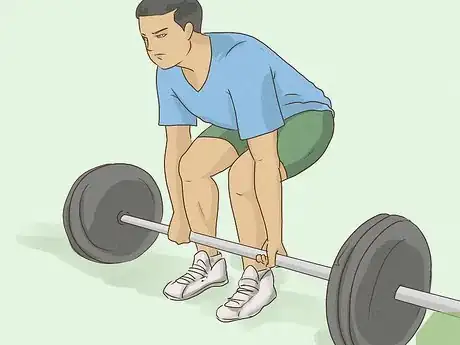
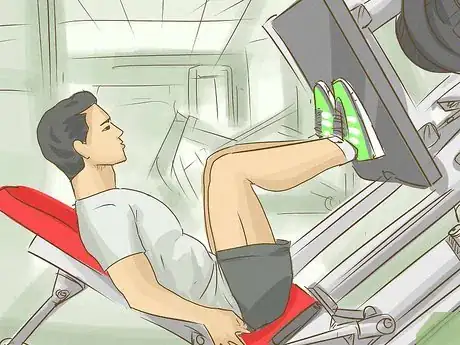
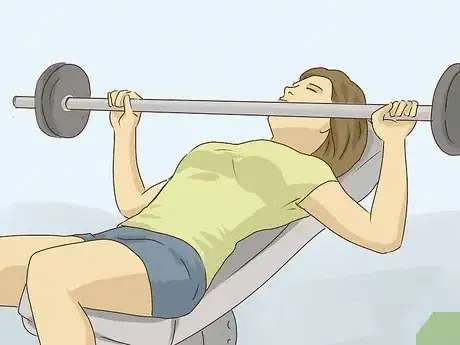

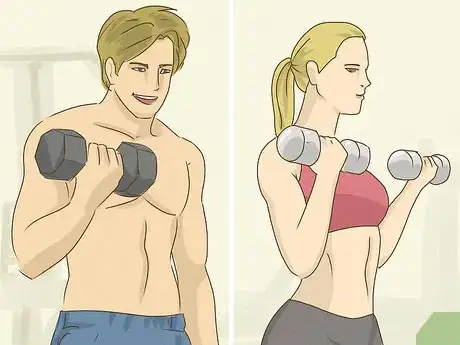
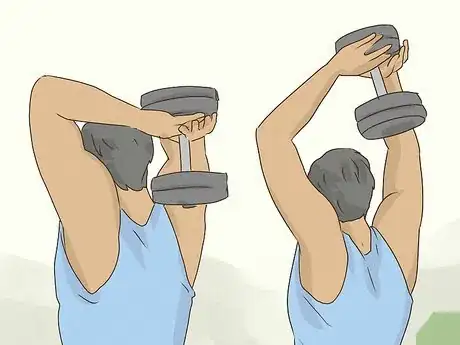
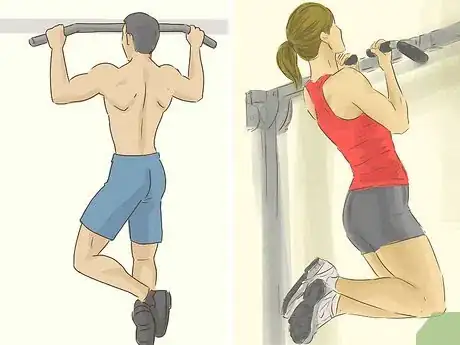
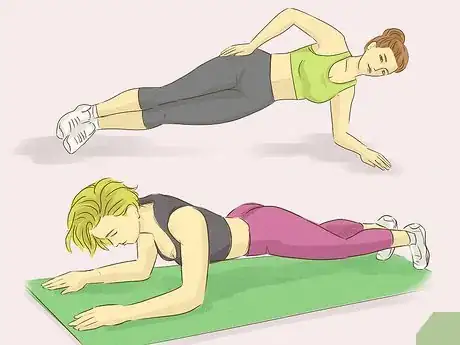
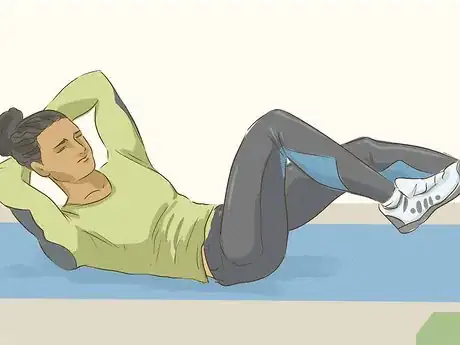
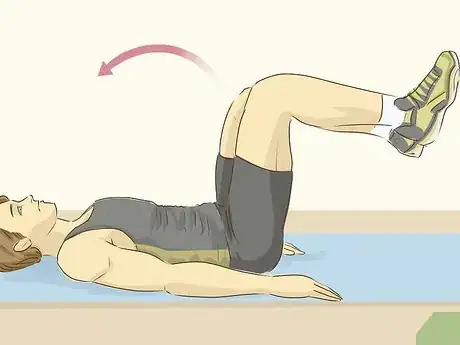

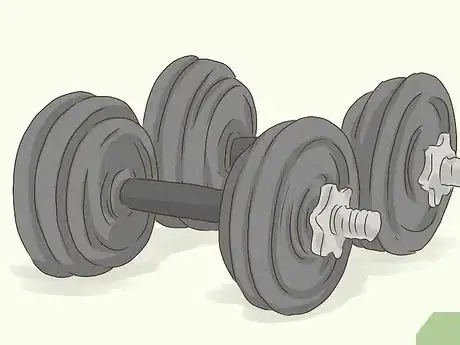
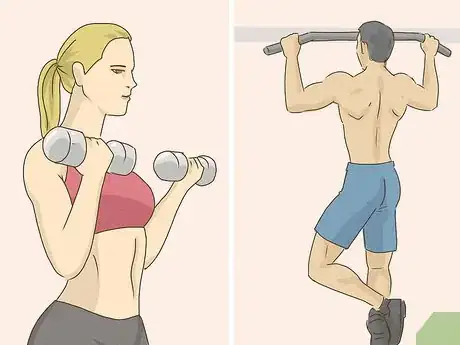
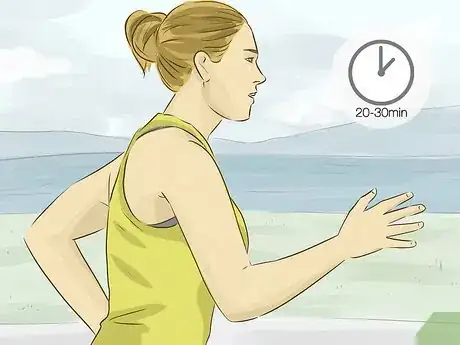
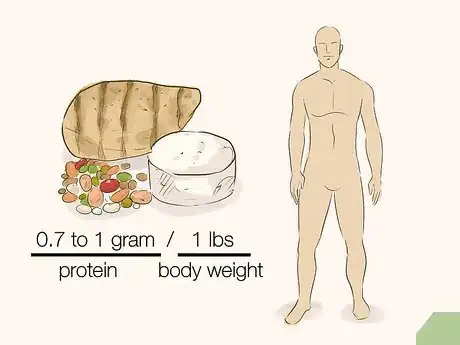
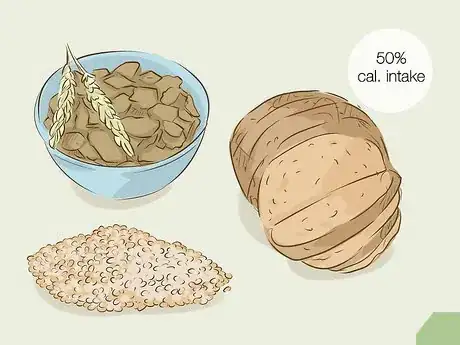
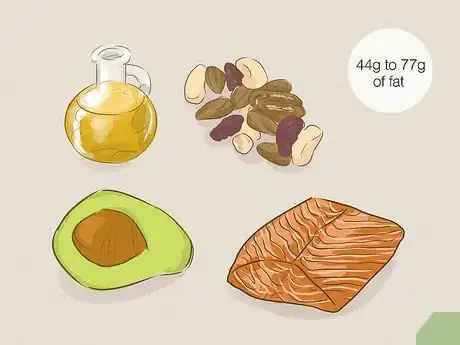
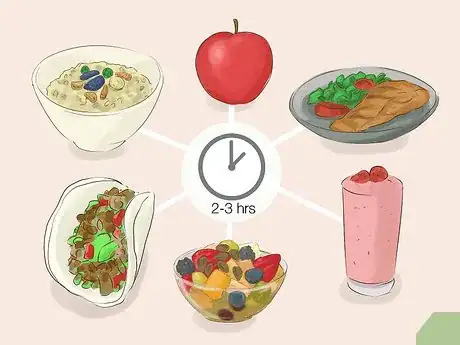


-Step-16-Version-2.webp)
-Step-14.webp)



















-Step-16-Version-2.webp)
-Step-14.webp)



































